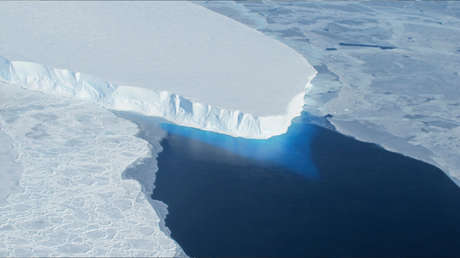Posted:
20 dic 2021 23:22 GMT
The researchers suggest that there must be an entire network of algae carried by ocean currents beneath the ice shelf that allows this biodiversity to survive.
They hide under the inhospitable appearance of Antarctic ice Abundant forms of life, as verified by an international team of scientists, who on Monday published their findings in the journal Current Biology study.
The samples were collected in 2018 by researchers from the Alfred Wegener Institute (Bremerhaven, Germany), who used hot water to drill roughly two holes. 200 meters All are on the Ekström ice shelf in the southeast Weddell Sea.
Once they reach the bottom of the sea, the team discovers an unexpected group of 77 animal species, which included Saber-shaped bryozoan Como Melicerita obliqua y serpentine worms such as Paralaeospira sicula.
The results were especially interesting due to the rich biodiversity of the species, despite the fact that it was several kilometers from the open sea, where there are more sources of light and food.
While previous expeditions have discovered some small predators and litter such as fish, worms, jellyfish or krill under the “continental” ice, no organisms such as bryozoans or worms have been found in such hostile habitats.
“Discovering a lot of life in these harsh conditions It’s a complete surprise It reminds us that Antarctic marine life is very unique and special,” pointed out David Barnes, a marine biologist with the British Antarctic Survey and lead author of the study. As he explained, most of these animals feed on microalgae (phytoplankton), but since no plant or algae can survive in this environment, “the big question is How do these animals live and reproduce here?“
Researchers suggest that there must be a whole network of algae carried by ocean currents under the ice shelf. This theory would be most useful to explain the fact that the team’s microscopic examination showed that the annual growth of four of the species was similar to that of similar animals in open sea shelf habitats in Antarctica.
traces of the distant past
“Another surprise was the longevity found here. The carbon dating of these dead animal fragments differed from the sea floor. From today to 5800 years ago“says Gerhard Kohn, co-author of the study.” Despite living 3-9 kilometers from the nearest open water, the oasis of life may have existed continuously for nearly 6000 years under the ice shelf, he imagines.
The team warns that climate change and snowmelt are rapidly reducing the time available to study and protect these ecosystems.

“Proud web fanatic. Subtly charming twitter geek. Reader. Internet trailblazer. Music buff.”




:max_bytes(150000):strip_icc()/TOUTQuiqueUsales-d41036a5131a4c4187c7b8e363c2018a.jpeg)


More Stories
How can you record your video calls on WhatsApp? This is how it's done on Android – Teach Me About Science
Retro Nintendo games are coming to iPhone: how to install them
How to find out a person's location just by searching for his cell phone number